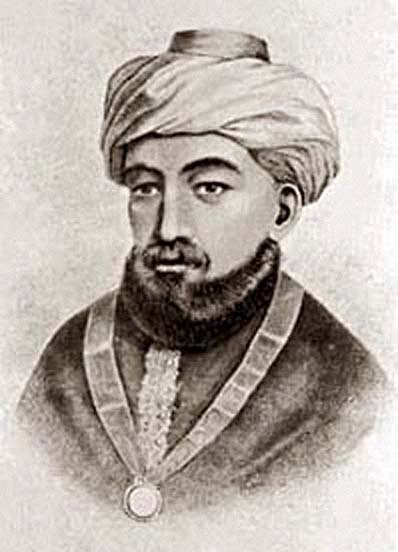How Jewish Customs and Traditions Evolved: From 1492 to Today
A blog post by Eric Z. Weintraub, author of South of Sepharad
Growing up in a Jewish household, I always believed that the customs and traditions my family practiced were as old as our religion, passed down from the Torah.
However, while compiling depictions of Jewish life in 1492 Spain for my novel South of Sepharad, I discovered that some of today’s most popular Jewish customs were adopted much more recently than I imagined.
Here are five popular Jewish customs from today and how they’ve changed since 1492:
Burial
Today, most Jews are buried in a simple wooden coffin. Bodies are cleaned, but they are not embalmed, and Jews do not practice open casket funerals. The idea is that all people are equal in death (hence, the simple coffin) and nothing should put off the decomposition process because, “...you are dust, and unto dust you shall return.” (Genesis 3:19).
While the meaning behind the customs were the same in 1492, the use of coffins is a newer concept. In 1492, Jews would have been swaddled and buried in only a simple white shroud (known as a tachrichim), thus expediting their return to the dust. This practice is depicted in the opening pages of South of Sepharad.
It’s worth noting that the practice of burying someone in only a shroud is still performed in some areas of the Jewish world today.
B’nai Mitzvahs (a.k.a. bar and bat mitzvahs)
Today, b’nai mitzvahs serve as a major milestone in a young Jewish person’s life, signifying their transition into adulthood when they turn thirteen years old. Celebrations can be extravagant, second only to a wedding. Given the amount of attention b’nai mitzvahs receive, I always assumed it was a foundation of Jewish customs.
However, there are no mentions of b’nai mitzvahs in the Torah. Bar mitzvahs (for boys) became a tradition in the middle ages. Bat mitzvahs (for girls) are even more recent. The first bat mitzvah did not occur until the 1920s in New York City.
For this reason, while a bar mitzvah is depicted in South of Sepharad, bat mitzvahs are never mentioned.
The Chuppah
If you’ve ever been to a Jewish wedding ceremony, you’ve likely seen the couple get married under a chuppah, a canopy meant to symbolize the new home the couple will build together.
While the concept of the chuppah can be traced back to the Hebrew Bible, the inclusion of a chuppah in a Jewish wedding didn’t gain popularity until 16th century Poland – 100 years after and many nations away from the events of South of Sepharad.
The Hora and “Hava Nagila”
A staple of any modern Jewish celebration is the hora, a dance where guests hold hands and dance in a circle around the bride and groom (or b’nai mitzvah boy or girl) while a few strong guests at the center of the circle lift the couple up in chairs. This is frequently paired with the song “Hava Nagila.”
Both traditions originated in the early 20th century, with the hora having its origins in Romania, and “Hava Nagila” being written by a soldier during World War One. It would be anachronistic to include these customs in 1492 Spain. However, circle dances and the concept of lifting up a bride or groom go back centuries. Thus, it is likely that the Hora has its origins in older traditions that would have been practiced in 1492. A predecessor to this dance occurs at a wedding in an early chapter of South of Sepharad.
The Afterlife
The concept of the afterlife in Judaism is complex, ambiguous, and has differed over time. I am unqualified to suggest a consensus on what modern Jews believe happens when we die and any consensus on an afterlife in 1492 would likely be equally varied.
However, in my research I learned of a Spanish Jewish philosopher and physician named Moses ben Maimon, commonly known as Maimonides (1138-1204). In his work, The Mishneh Torah, Maimonides puts forth the idea that when we die, our souls return to exist in the company of God. While Maimonides has always been a controversial figure in Jewish history, it is possible that Spanish Jews may have followed his teachings in 1492. Although never explicitly stated in the novel, the protagonists of South of Sepharad are followers of Maimonides’ beliefs.
To learn more, I recommend this great animated video that covers the history and thoughts on Jewish afterlife.
About the Author
Eric Z. Weintraub earned an MFA in Creative Writing from Mount St. Mary’s University where he wrote his debut novel South of Sepharad. Growing up in Los Angeles, CA, he came from a family of filmmakers, writers, and educators stirring in him a passion for storytelling from a young age. His short fiction has appeared in Tabula Rasa Review, Halfway Down the Stairs, The Rush, and elsewhere. His novella Dreams of an American Exile won the 2015 Plaza Literary Prize and was published by Black Hill Press. His short story collection The 28th Parallel was a finalist for the 2021 Flannery O’Connor Award in Short Fiction. When not writing fiction, Eric profiles true stories of complex medical cases where he works at the Keck School of Medicine of USC.




